The development of digital cellular structures by the mobile communications industry has generated a genuine fusion between information space and urban territory. City location, time, day and date can all shape relationships to information sources. The tight constraints of mobile displays, juxtaposed with the spontaneity, unpredictability and transience of everyday mobility requires a fresh approach to how this relationship might work...
The potential of cellular data structures lies in local situations and the local community. The design team initially made a visit to the very cold and frozen city of Helsinki, the place where the phone company was based and any project user testing was to take place. We undertook various exercises as a process of familiarisation with the city: randomly following people as a way making journeys to places not normally encountered as a visitor; identifying places where people gathered to get a sense of how the city was structured culturally, and cellularly; and identifying places where information exchanges took place, and the media that facilitated these exchanges (public transport systems, advertising billboards, libraries, bookshops...). The three-day visit formed a mini study which was extremely valuable in forming a foundation to the work that followed.
Fueled by constant discussion within the group and a number of diverse investigations, a territory of ideas emerged following the Helsinki visit. A conceptual landscape of service proposals was mapped out with reference to our project partners and their areas of interest. At one end of the map we placed the 'grassroots' services such as city information services to provide train timetables and news. At the opposite end of the map were those ideas dealing with pure fiction and narrative – the realm of game playing. In the middle space of the map – which we called 'daydreaming' – we placed service ideas that drew both from reporting the factual city and our imagination.
We created multimedia simulations to explore the look and feel of selected service ideas – particularly ideas that fell in to the 'daydreaming' category that we had previously identified. These simulations also provided material that could be used to help develop the technical system being designed by the project partners. User feedback from the focus groups was contradictory since the concept of mobile connectivity was, at the time, not within the popular imagination and the different age groups responded according to different criteria. We evaluated our ideas so far and chose which ones could be adapted to take forward. This involved a process of simplification and strict adherence to technical feasibility.
The team proposed three experiments for the trial with real phones and a user group in Helsinki: Pixel Kissing, Lost Cat and Stampede. Each explores a different form of interaction: Pixel Kissing, between the proximity of people; Lost Cat, in relation to place and unpredictability of time; and Stampede, using people's spatial imagination. Each experiment also proposes a different graphic representation within the tight constraints of the mobile phone display and memory: Lost Cat uses a simple silhouette but with realistic movement; Stampede, although a very simple representation of both movement and form, demands input from the imagination; while Pixel Kissing, although fundamentally text-based, uses pattern as a recognition device rather than relying on concentrated reading of text. Although each uses a simple representation and interaction, the underlying structures of behavior are far more complex.
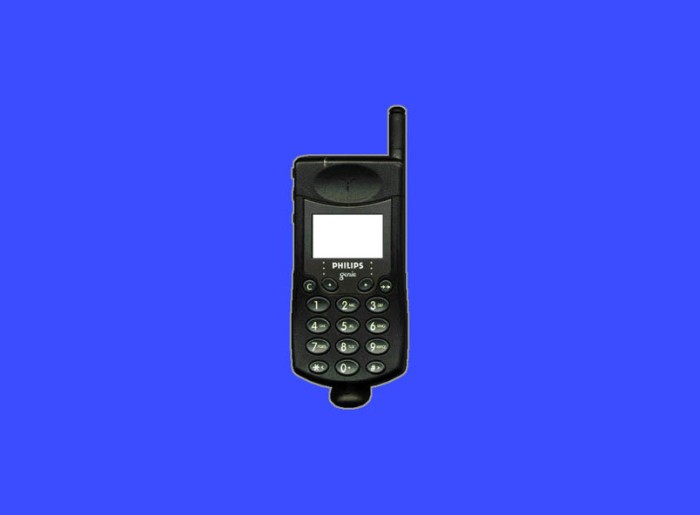
The design team initially made a visit to the very cold and frozen city of Helsinki.
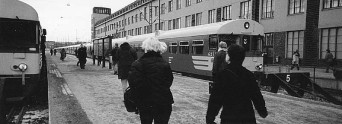
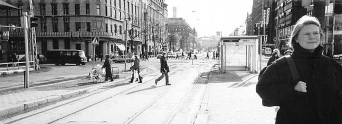
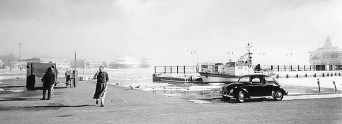
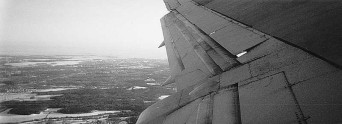
The Helsinki Telephone Corporation were reluctant to reveal where their mobile phone antennae are placed, but we had gathered enough understanding of the system to create our own working model (shown). Although not absolutely accurate, the phone corporation said it was a realistic representation of cellular coverage outside of buildings – both in terms of the total number of phone cells and in the densities of their arrangement (more antennae are needed to ensure good mobile coverage in more built up areas).
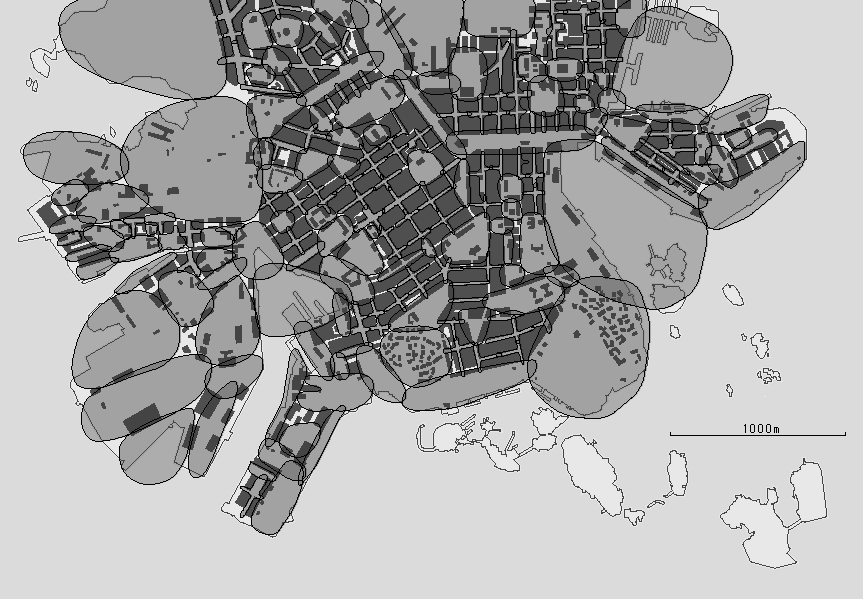
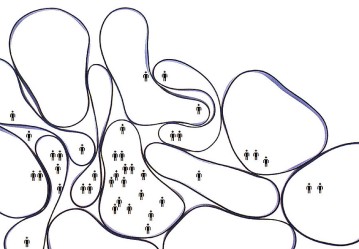
Pixel Kissing is a social experiment exploring virtual communities in real space. When members of the same virtual community are present in the same phone cell they receive a Pixel Kissing signal alerting them to the other's presence. They will not have met physically so will not be able to identify who that person is, only that they are somewhere close by.






























Lost Cats: the actual animation files used on the phones in the trials in Helsinki.




















A herd of electronic reindeer stampede through the cellular phone network of Helsinki, moving at about a cell a minute. Phone-users in the path of the reindeer are sent animations of increasing intensity as the herd approaches.






